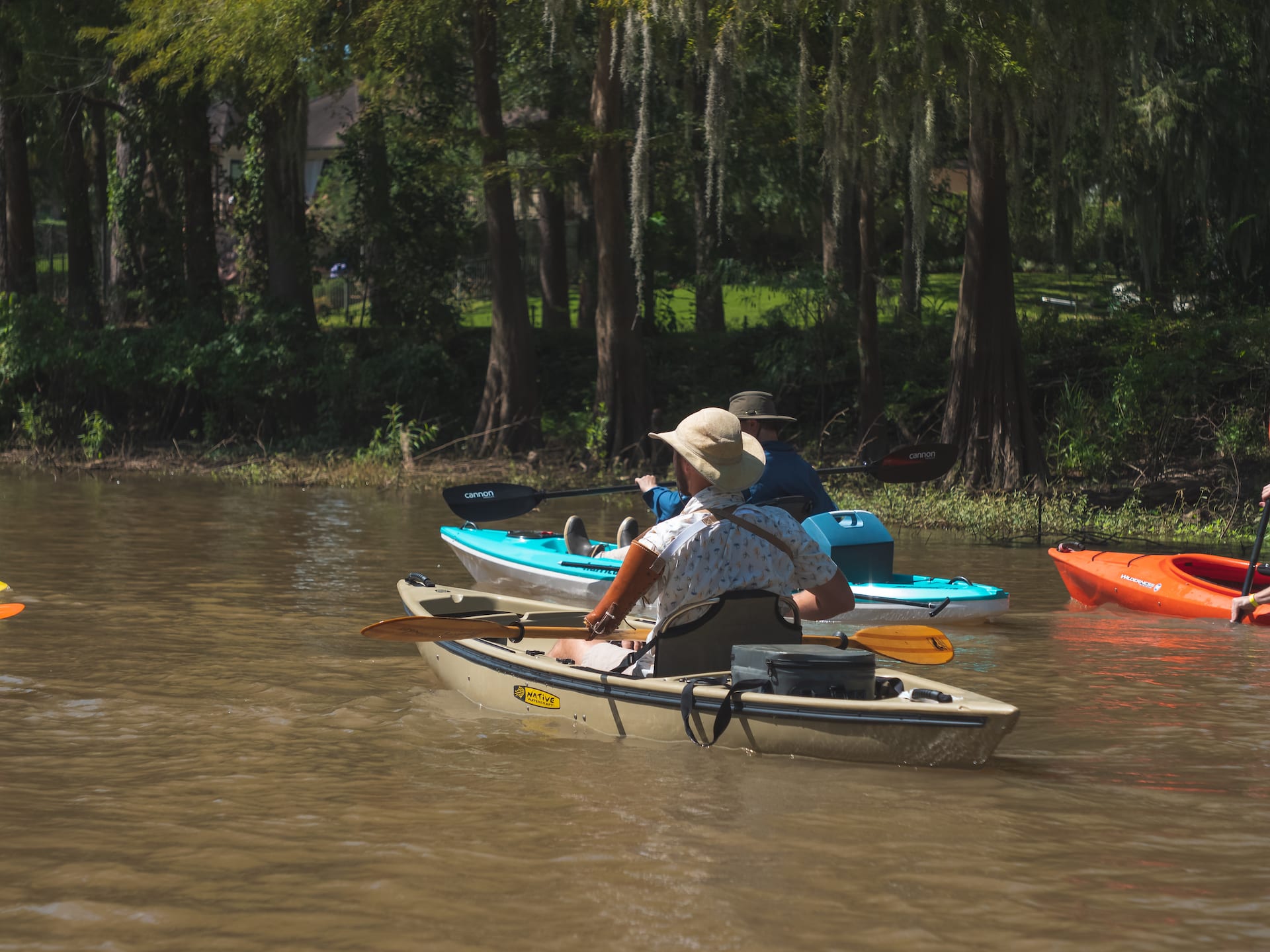COLLECTIONS
Vermilionville Living History Museum & Folklife Park’s collections characterize the main cultures that made up the majority of the Attakapas region up through the end of the 1800s. This includes representing the lives of the Native Americans, Acadians, Creoles and peoples of African descent.
Vermilionville’s interpretive history spans the 17th, 18th, and 19th centuries of this region. The houses in the village each represent a different time period, occupation, or socio-economic class of people living in this area of south Louisiana. For instance, the Broussard house (c. 1790), which is our largest and oldest house, depicts the lifestyle of a wealthy Acadian rancher/planter family during French Colonial Louisiana, while the Boucvalt house (1880), our youngest, depicts the lifestyle of wealthy Victorian era town dwellers. Some of the homes represent particular occupations or crafts of the time, such as the Beau Bassin house, which houses artifacts used in the textile arts and features demonstrations of cotton spinning and weaving, the Mouton house, which focuses on tools and features demonstrations of woodworking, and the Maison Acadienne, which showcases a traditional Acadian healer’s garden.
As a living history village museum, Vermilionville has a large permanent collection of historical artifacts, including seven original homes dating from circa 1790 to 1880, as well as the furnishings, appliances, tools, housewares, boats, and decorative arts commonly used around this period of time. To make our village complete, Vermilionville also has several structures that are reproductions of period buildings, as well as tools, furniture, and folklife objects crafted by our artisans. These are part of our educational collection and used in craft demonstrations and as props. Vermilionville also houses an archival collection including photographs, audiovisual materials, historic maps, and the museum’s internal records. Along with the permanent collections, Vermilionville houses many long-term and permanent loans in the collections, used for temporary and permanent exhibits.
In addition to manmade and built historical culture, Vermilionville has rich natural history and conservation resources. We house a small natural history collection within our science exhibit on our local Vermilion River/Bayou Vermilion’s watershed. Vermilionville also houses a large living plant and animal collection located throughout the site.
Daily Menu & Events
Digital Collections
Because Vermilionville’s collections are restricted to a specific time period, Vermilionville also has digital collections through the Louisiana Digital Library to help connect Vermilionville with the local communities and more recent history throughout southwestern Louisiana. Vermilionville’s Digital Collection is publicly accessible through the Louisiana Digital Library, an online library of more than 144,000 digital items from Louisiana archives, libraries, museums, and other repositories, making unique historical treasure accessible to students, researchers, and the general public in Louisiana and across the globe. The items in the Louisiana Digital Library are as diverse and interesting as the people and places in Louisiana, with photographs, maps, manuscript materials, books, oral histories, and more documenting the state’s history and culture.
The Common Heritage Project invites our communities around Acadiana to bring their artifacts, documents, letters, photographs, diaries, postcards, maps, land documents, posters, awards, diplomas, and ephemera to Vermilionville Living History Museum for digitization. In addition to paper ephemera and stories, participants are encouraged to bring objects that were tools in their parent’s, grandparent’s, and great-grandparent’s livelihood. Occasionally we host collection days, or History Harvests, paired with a topic that also has a museum program that same day or weekend to supplement the digital collection with new material based on the different themes.
Made By Hand is a collection of artisan-made objects crafted at Vermilionville. Our local artisans continue to pass down these folk traditions to future generations and their love for their work is reflected in the care they take in making these artifacts. As a living history museum, Vermilionville presents the history and mixture of cultures throughout Louisiana’s historic Attakapas region through material culture and re-creates them through the use of traditional crafts.
Permanent Exhibits
Travailler C’est Trop Dur: The Tools of Cajun and Creole Music
The dogged survival of Cajun and Creole Music is an impressive success story about regional and ethnic cultures which have preserved themselves in spite of America’s homogenizing influence. Making music with fiddles and accordions, guitars and triangles, spoons and scrub boards, Cajun and Creole musicians have become cultural heroes as south Louisianans reaffirm their pride in their rich tradition. But the unsung heroes are the traditional instrument makers who provided performers with the tools of their trade, particularly those who plied their craft at a time when store-bought instruments were either unavailable or prohibitively expensive.
Maison des Cultures
As you enter the museum, our first structure serves as an introduction to the museum and the cultures we interpret, set within an 19th century house.
Village Living History Display and Philosophy
We have over sixteen thousand square feet of exhibit spaces in the Living History and Folklife area on about twenty acres. ‘Living history’ characterizes a powerful method of presenting and recreating the past. It is a technique involving action, animation, discovery, involvement, and participation.
DETERMINED TO RISE: THE WOMAN’S SUFFRAGE
MOVEMENT IN LOUISIANA
September 29th – October 8th
A traveling exhibit, Determined to Rise: The Woman’s Suffrage Movement in Louisiana, celebrates the challenges and triumphs of the women’s suffrage movement in Louisiana in celebration of the 100th anniversary of ratification of the 19th Amendment giving women the right to vote. Developed by the Centennial Women’s Suffrage Project (CWSP) at Southeastern Louisiana University and with grant support from the Louisiana Endowment for the Humanities (LEH) Rebirth grant program the exhibit consists of eight panels depicting photos of Louisiana suffragists, a timeline of significant events, the movement from the African-American woman’s perspective, laws that have changed since women gained the vote, and Louisiana women who have made their mark on history.

